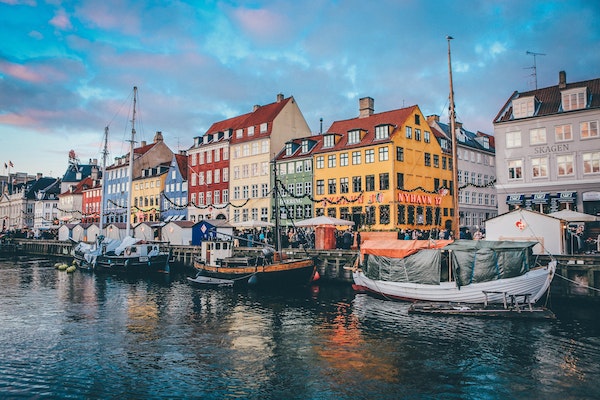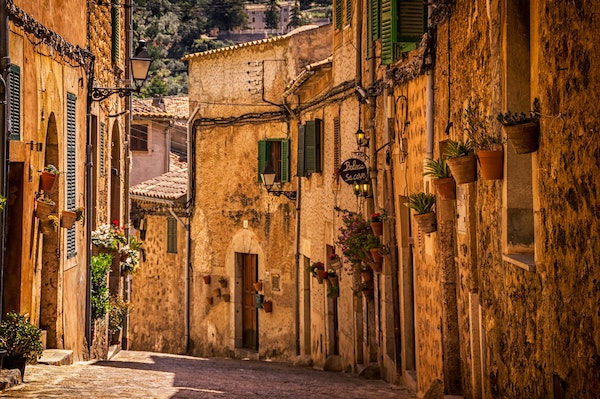Here in the United States, when we think of New Year’s Eve traditions, we picture firework displays, a giant crystal ball dropping in Times Square in New York City, champagne, and a kiss with a special someone at midnight. We make our New Year’s resolutions—that we often only keep for a few weeks. Then we dig into our traditional Southern New Year’s Day meal of black-eyed peas and collards. Or Hoppin John.
The peas symbolize coins, the greens symbolize dollar bills, and the cornbread is the color of gold. Supposedly, if we eat these traditional New Year’s day meals, it’s thought to bring good luck and get plenty of money at the start of a new year.
Other countries have their own unique New Year’s Eve and New Year’s Day traditions. Maybe we’ll discover new and memorable things to do on New Year’s Eve at home to add to our celebration. Or… maybe we’ll be glad to stick with our old standbys!
New Year’s Traditions Around the World
New Year celebrations around the world look very different from New Year’s traditions in America. But the premise is generally the same, to bring good luck and good fortune to the participants in the new year and to get rid of any bad from the previous year.

Brazil New Year Traditions
In Brazil, everyone wears white clothing to symbolize good luck and peace for the coming year. People throw white flowers and lit candles into the ocean and try to jump seven waves to get seven wishes for the new year.
New Year Food Traditions in Brazil
Citizens eat seven pomegranate seeds to have a full purse and seven grapes to be sure they have abundance in life.
Chili New Year Traditions
Churches hold mass in cemeteries so people can include their deceased loved ones in the celebration.
New Year Food Traditions in Chili
People eat lentils to bring prosperity on New Year’s Eve at midnight or lunch on New Year’s Day.
Colombia New Year Traditions
People carry empty suitcases with them and run around the block as quickly as they can to try to have a new year full of travel.
Colombians also place three potatoes under their bed. One that is fully peeled, one that is not peeled, and one that is half-peeled. At midnight, they reach under the bed and grab the first potato they feel. A peeled potato means financial setbacks in the new year, an unpeeled potato signifies abundance, and a half-peeled potato means an average year, financially.

Denmark New Year Traditions
People break dishes on their friends’ doorsteps to leave behind any ill-will before the New Year and for good luck. The more shards of broken dishes on your doorstep, the better year you will have. At midnight, Danish also people stand on chairs and leap into the year ahead for luck and to get rid of evil spirits.
New Year Food Traditions in Denmark
Danes eat boiled cod with mustard for a traditional meal on New Year’s eve. Then for dessert, everyone shares a tower of marzipan almond cake or “wreath cake,” called kransekage.
Ecuador New Year Traditions
People create scarecrows to represent disliked politicians and celebrities then burn the scarecrows at midnight to cleanse the new year of anything bad.
Filipino New Year Traditions
Citizens wear polka dots to represent coins. They decorate with 12 round fruits, which symbolize coins, as well. People keep windows and doors open to allow good luck to enter the home. They light fireworks and make plenty of noise to cause evil spirits to leave. At the stroke of 12, they jump as high as they can so they will be taller.
New Year Food Traditions in the Philippines
On New Year’s Eve, Filipinos share a midnight family meal called, “Media Noche,” where they exchange gifts and talk. They eat sticky rice cakes to strengthen their family’s bonds and relationships and eat the twelve round fruits for good luck for the whole year ahead. Families also eat pancit for long life, whole pork for prosperity, and whole fish, whose scales represent coins.

Greek New Year Traditions
Before midnight, Greeks turn off the lights to plunge “the old” into darkness and everyone leaves the house. One favored person gets to smash the pomegranate in front of the door (that had been hanging on the door since Christmas). The abundant seeds represent prosperity and good fortune. Then everyone comes into the house, turning the lights on “the new” and shares good wishes.
Also on New Year’s Eve, Greeks hang onions on their doors as a symbol of rebirth and growth during the next year. On New Year’s Day, parents use the onion to tap the kids on the heads to wake them up. Then the children get to open their Christmas presents from St. Nicholas.
New Year Food Traditions in Greece
Families eat sweet yeast bread, called vasilopita, at midnight. They set aside a slice of bread for St. Basil and people in need. Whoever finds the coin baked into the bread will have a year of good fortune.
Irish New Year Traditions
The Irish like to do a “spring cleaning” to start the year off with a clean slate. They bang Christmas bread on the doors, windows, and walls of the home to chase evil spirits and bad luck away and to invite good spirits in.
They also believe that if the wind comes from the West, the country will have a great year, but if it comes from the East, the UK will have good luck, not Ireland. Single people sleep with mistletoe under their pillows to attract a spouse in the new year.
New Year Food Traditions in Ireland
Families set a place at the dinner table for loved ones who passed away during the previous year and keep the door unlocked to remember those they lost. They eat corned beef, a special treat, and cabbage for good luck and abundance.
Japanese New Year Traditions
Japanese people often dress as the coming year’s zodiac animal. They decorate their homes with lobsters to have a long life and clean the house thoroughly.
New Year Food Traditions in Japan
In Japan, people welcome the new year by eating a bowl of soba noodles in a ritual called, Toshi Koshi soba, meaning, “year-crossing” noodles. Long noodles signify crossing over from one year to the next. Because the noodles are also easily cut, people “cut off” the past and face a fresh start.
Russian New Year Traditions
Russians write down their wishes and hopes for the new year on a piece of paper, burn it with the flame of a candle, then sprinkle the ashes in a glass of champagne and drink it.
Scotland New Year Traditions
The Scots celebrate, “first footing.” They believe that the first person who walks through the doorway of the house must be a dark-haired male to have good luck next year. The Scottish also have bonfires and swing fireballs (representing the sun) to purify the new year.

Spanish New Year Traditions
The Spanish celebrate with fireworks at midnight, as many cultures do. They also wear yellow underwear for good luck or red to attract love and romance.
New Year Food Traditions in Spain
The Spanish try to eat twelve grapes as the clock chimes at midnight. One grape with each chime for each of the twelve months of the new year. People try to think about each month as they eat to have a lucky year but must finish by the time the clock finishes its strokes.
However You Celebrate This New Year, We Wish You a Wonderful 2021!
Whether you decide to incorporate some other culture’s New Year ideas or create your own family traditions, all of us at Blythe Building Company hope you and your loved ones have a happy, healthy, and prosperous New Year. And we hope you will enjoy the blessing of family, friends, and a beautiful place to call home.
Ready to Build a New Home for Future New Year Celebrations in Lexington, SC?
However you love to celebrate the New Year, we’re here to help you have the perfect home in which to ring in the New Year with loved ones. We build luxury homes in the Greater Columbia area.
Related
How to Increase the Value of Your Home for Resale
Saluda River Club—Hottest Neighborhood in SC!







